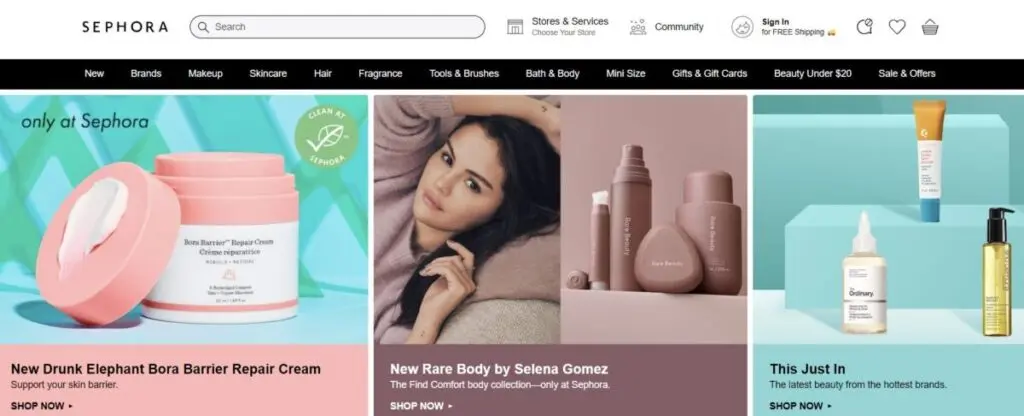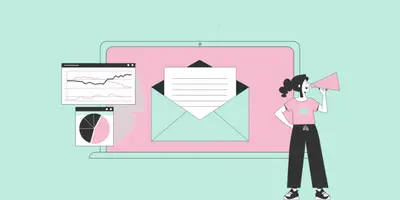Did you know that the number of global email users is estimated to grow to 4.73 billion people by 2026? That’s almost half the world’s population.
Given the wide reach of emails, a lot of marketers choose to invest in email marketing. However, not all succeed. Emails get lost in crowded inboxes or simply ignored by uninterested recipients. There are a lot of reasons why email marketing fails, but knowing how to do it right can help you avoid them. In this post, we have curated a list of 12 effective email marketing strategies that will help you succeed.
12 Email Marketing Strategies You've Never Tried:
- 1. Personalize Your Emails
- 2. Use Behavior Segments For Automated Emails
- 3. Use A/B Testing
- 4. Send Emails at The Right Times
- 5. Use Email Templates
- 6. Create and Send Mobile-Responsive Emails
- 7. Make Way For Two-Way Communication
- 8. Use Emotion to Encourage Action
- 9. Provide Valuable Content
- 10. Add Multiple CTAs or Links
- 11. Leverage the Power of Visuals
- 12. Always Offer a Way Out
1. Personalize Your Emails
When it comes to email marketing, there’s nothing that’s more effective than personalization. A simple, “Hi Joe,” is much more likely to get the person to open the email than an email with no salutation.
Check out this email from a food delivery service, for example. The use of a person’s name in the email subject line can be a very effective way to get them to open the email.
And, it is not that difficult to personalize emails if you already have customer data along with their email addresses. You don’t even have to do it manually. All you have to do is use email marketing and automation tools that can help you personalize your emails at scale.
Here are some ways in which you can personalize your emails:
- Add the subscriber name as a salutation or even in the subject line.
- Send personalized recommendations to your subscribers based on their past online behavior.
- Provide personalized offers to your subscribers based on their preferences.
- Send cart abandonment emails and welcome emails as appropriate.
2. Use Behavior Segments For Automated Emails
If you have done email marketing in the past, you know that it is important to have different email lists. Not all your subscribers are alike, and you need to target different segments with different types of emails and content.
However, using demographics or other traditional segmentation criteria is not effective anymore. You need to leverage advanced web analytics and other technologies to analyze your website visitors’ online behavior. Then, you should segment your subscribers based on past online behaviors and preferences.
This is a much better way to target people and is a more effective way to desired results from your email campaigns. Netflix, for example, sends notifications to their subscribers when there’s a new series or movie that a particular individual might like.
3. Use A/B Testing
A/B testing your emails is an effective way to understand what works with your customers so that you can then optimize your future email content. Just like with A/B testing your website, you can perform these test on different elements of your emails.
For example, placing the CTA button at the top instead of the bottom of an email might improve the click-rates. Or, perhaps your audience prefers a particular type of CTA more than others. You can test things like these using A/B testing and design email templates that you know will be effective for your subscribers.
4. Send Emails at The Right Times
One of the biggest challenges that marketers face is that their emails get lost in a crowded inbox. It is quite difficult to get your emails noticed when a person has so many emails to check.
That is why it is important to send emails at the right times. Most people check their email in the morning and usually have a crowded inbox that they have to go through. Therefore, it is not a good idea to send an email early in the morning.
However, once a person has gone through their emails in the morning, when they check their inbox again during the day, it won’t be as crowded. So, it is a good idea to send emails in the late mornings or afternoons to get these noticed.
5. Use Email Templates
There is a lot of debate around whether to use templates or design each email from scratch. The proponents of the latter would argue that customizing each email is more effective in getting more engagement. That might be true to a certain extent, but is not feasible in the long run, especially for larger companies that send thousands of emails in a day.
A better alternative is to create customized email templates, using your brand guidelines, that you can reuse later. It is a sheer waste of time and effort to create each email from scratch. All smart marketers know how to balance efficiency with creativity, and customized templates are perfect for that.
6. Create and Send Mobile-Responsive Emails
A lot of people check their emails on-the-go while commuting to and from work or travelling for other business purposes. The use of mobile devices to check emails has grown tremendously over the years. Therefore, it is important to make sure that your emails are mobile-friendly.
Use mobile-responsive designs that work well regardless of which device they are viewed on.
7. Make Way For Two-Way Communication
Never send emails from “no-reply” email addresses, as that closes off your line of communication with your subscribers. You should always give them the option of replying to your emails and keep the channel open.
This helps you connect with your audience better and gives them an assurance that they can connect with you directly if they want to.
8. Use Emotion to Encourage Action
Using emotion to engage your audience and encourage them to take an action works for all types of marketing. Humans are, after all, social and emotional beings who can be influenced by using emotional cues.
Therefore, it is a great idea to use words or sentences that evoke positive human emotions. Here’s an example of an email that uses this strategy to engage the viewers.
9. Provide Valuable Content
You need to provide valuable content. This is not some hidden strategy, but a fact that should be apparent to everyone.
However, a lot of marketers still make the mistake of not considering this for email marketing. Email marketing is often limited to transactional and promotional emails, and marketers don’t really focus on providing valuable content via emails.
Do not make that mistake. There is nothing like a useful and relevant piece of content to engage your audience. You can use this in your email marketing, just like a lot of smart marketers do.
Here’s an example from Zomato where they send a list of valuable content resources to their subscribers.
10. Add Multiple CTAs or Links
The main goal of sending emails is to get people to your website, usually to make a purchase or consume your content. Why should you, then, limit yourself to just one website link or CTA?
The more options you provide, the more chances there are that your subscribers will click on one. Moreover, providing a choice makes people feel in control. Many people like to go through the options and click on the one they like, instead of having just one option that they may or may not want to click on.
Here’s an example where the company has given direct purchase links for some products in their email. This is useful because they can cater to a broader audience with a single email, as every subscriber might have at least one product that they like from the options.
11. Leverage the Power of Visuals
Emails with a lot of text are boring and fail to engage people. No one wants to have to go through a block of text to find something of value. The easier you make it for people to read your emails, the better the engagement you will get.
That is where adding visuals can help you. Some marketers go as far as using only pictures in their emails or newsletters. You can always make it interactive and add a link right in the image.
Here’s an example of Sephora’s newsletter that has lots and lots of visuals. It is like a mini product catalog with beautiful pictures that tempt people to buy those products.

Source: sephora.com
12. Always Offer a Way Out
After you have tried your best and followed all of the expert tips and tricks, some people just might not be interested in receiving your emails.
Here’s really no point in spamming people who are just not interested. It could cause them to mark your emails as “spam” and that is bad for your brand’s reputation.
The best thing to do in such situations is to give them an option to unsubscribe. And, this should not be difficult at all. In fact, add this option at the end of your emails so that anyone who does not want to receive your emails can easily opt-out.
While most brands would simply provide the unsubscribe option below an email, some go as far as to draft an email for it.
Here’s an example of one such email. We don’t know about you, but we would rather not get kicked off a list and would open the email. At least some people may be retained by seeing an email like this, and that is the brilliance of it.
Ready to Try These Email Marketing Strategies?
These email marketing strategies can help you improve your email campaigns and get the desired results. These just might be what you needed to take your campaigns from average to brilliant.
Try these and see the results for yourself.









